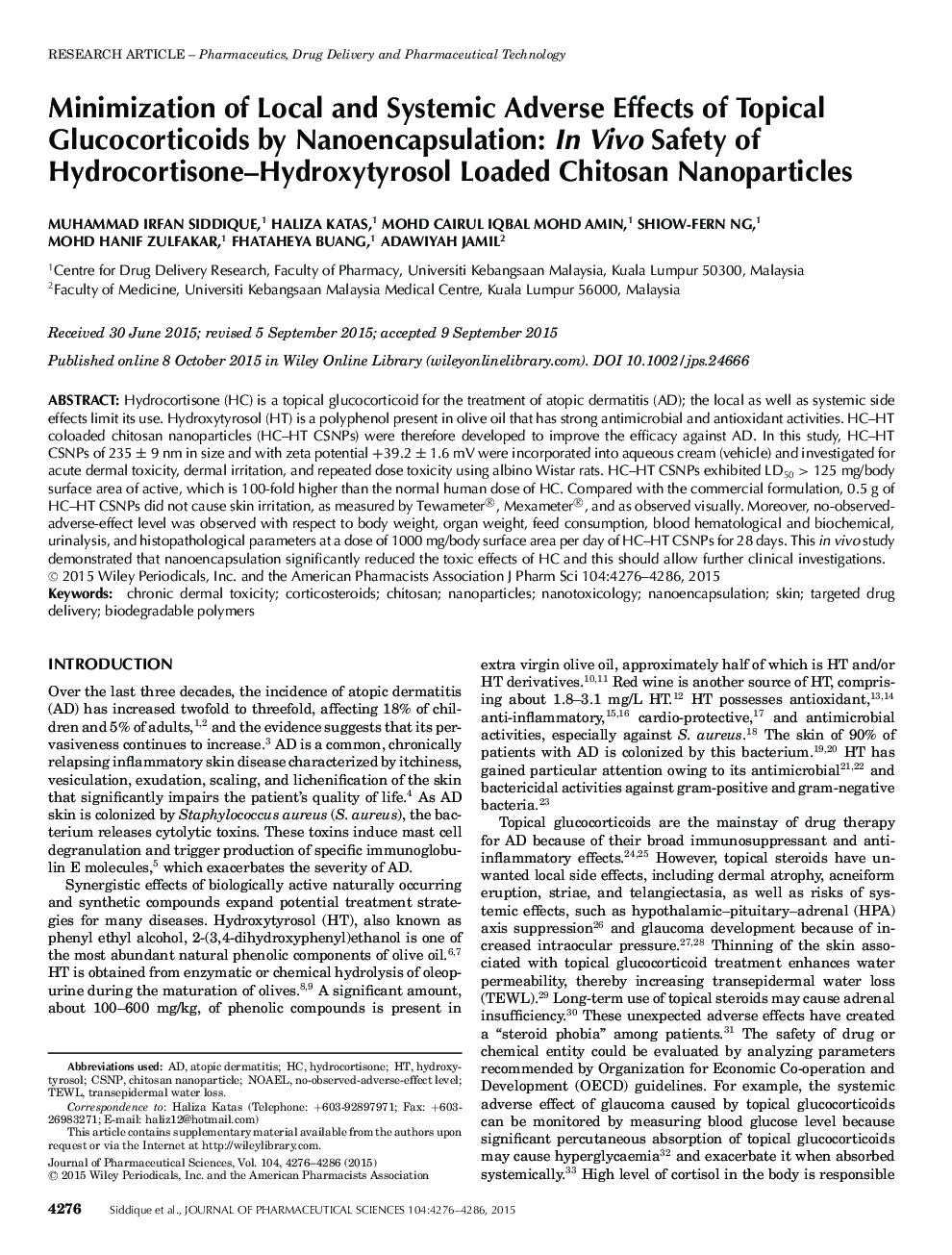| Article ID | Journal | Published Year | Pages | File Type |
|---|---|---|---|---|
| 10161953 | Journal of Pharmaceutical Sciences | 2015 | 11 Pages |
Abstract
Hydrocortisone (HC) is a topical glucocorticoid for the treatment of atopic dermatitis (AD); the local as well as systemic side effects limit its use. Hydroxytyrosol (HT) is a polyphenol present in olive oil that has strong antimicrobial and antioxidant activities. HCHT coloaded chitosan nanoparticles (HCHT CSNPs) were therefore developed to improve the efficacy against AD. In this study, HCHT CSNPs of 235 ± 9 nm in size and with zeta potential + 39.2 ± 1.6 mV were incorporated into aqueous cream (vehicle) and investigated for acute dermal toxicity, dermal irritation, and repeated dose toxicity using albino Wistar rats. HCHT CSNPs exhibited LD50 > 125 mg/body surface area of active, which is 100-fold higher than the normal human dose of HC. Compared with the commercial formulation, 0.5 g of HCHT CSNPs did not cause skin irritation, as measured by Tewameter ®, Mexameter ®, and as observed visually. Moreover, no-observed-adverse-effect level was observed with respect to body weight, organ weight, feed consumption, blood hematological and biochemical, urinalysis, and histopathological parameters at a dose of 1000 mg/body surface area per day of HCHT CSNPs for 28 days. This in vivo study demonstrated that nanoencapsulation significantly reduced the toxic effects of HC and this should allow further clinical investigations. © 2015 Wiley Periodicals, Inc. and the American Pharmacists Association J Pharm Sci 104:4276-4286, 2015
Keywords
Related Topics
Health Sciences
Pharmacology, Toxicology and Pharmaceutical Science
Drug Discovery
Authors
Muhammad Irfan Siddique, Haliza Katas, Mohd Cairul Iqbal Mohd Amin, Shiow-Fern Ng, Mohd Hanif Zulfakar, Fhataheya Buang, Adawiyah Jamil,
